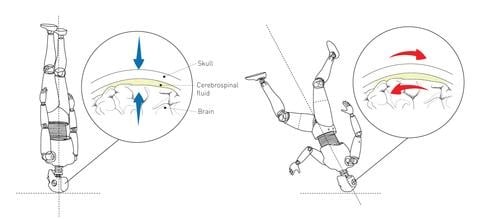- Free shipping on most EU orders over € 80,-
- Secure payment
- 7 days a week support
- Fast delivery

| Reducing rotational forces during an impact has been something we’ve focused on since the very beginning, by creating low volume helmets with a smooth surface that’s more likely to slide on the ground during an impact. In 2011 we made a big step further by being one of the very first helmet brands to partner up with MIPS. We have worked closely with them ever since, and we are continuously working to improve performance through MIPS’s superior technology. Today MIPS brain protection technology is implemented either as standard or as an option throughout our entire range of bike, ski, and snowboard helmets. THIS IS HOW MIPS WORKS In a helmet with MIPS Brain Protection System (BPS) the shell and the liner are separated by a Low Friction Layer. When a helmet with MIPS Brain Protection System is subjected to an angled impact, the low friction layer allows the helmet to slide relative to the head. The MIPS BPS is designed to add protection in helmets against the rotational motion. The rotational motion is a combination of rotational energy (angular velocity) and rotational forces (from angular acceleration) that both affect the brain and increases the risk for minor and severe brain injuries. MIPS BPS has been scientifically proven to reduce rotational motion when implemented in a helmet by absorbing and redirecting rotational energies and forces transferred to the brain. MIPS works by installing a thin (0.5–0.7 mm), ventilated, custom cut low-friction layer inside the helmet liner. The layer is held in place by an assemblage of composite anchors that flex in all directions. These anchors hold the layer in place, around the head, but provide a small movement in response to angled impact. MIPS’s small movement (10-15 mm) relative to the helmet at the brief moment of an angled impact (3–10 milliseconds) allows the head to continue in the direction in which it was originally traveling. This means that some portion of the rotational forces and energies acting on the head at impact are redirected and spread out thanks to the large low-friction layer, rather than being transferred to the brain. Thanks to its thinness, lightness, and integration into the helmet’s existing ventilation, it’s rarely noticed by the wearer, even over extended periods of use. |
 |  |
MIPS IS BASED ON REALITY MIPS IS SCIENTIFICALLY TESTED AND PROVEN |